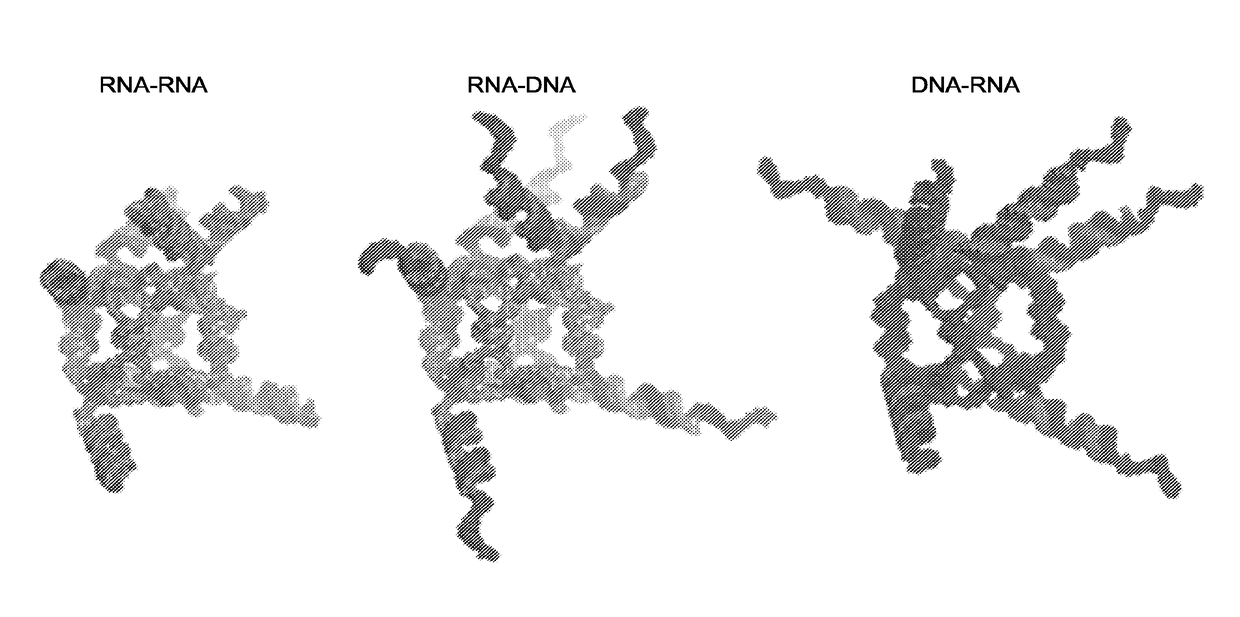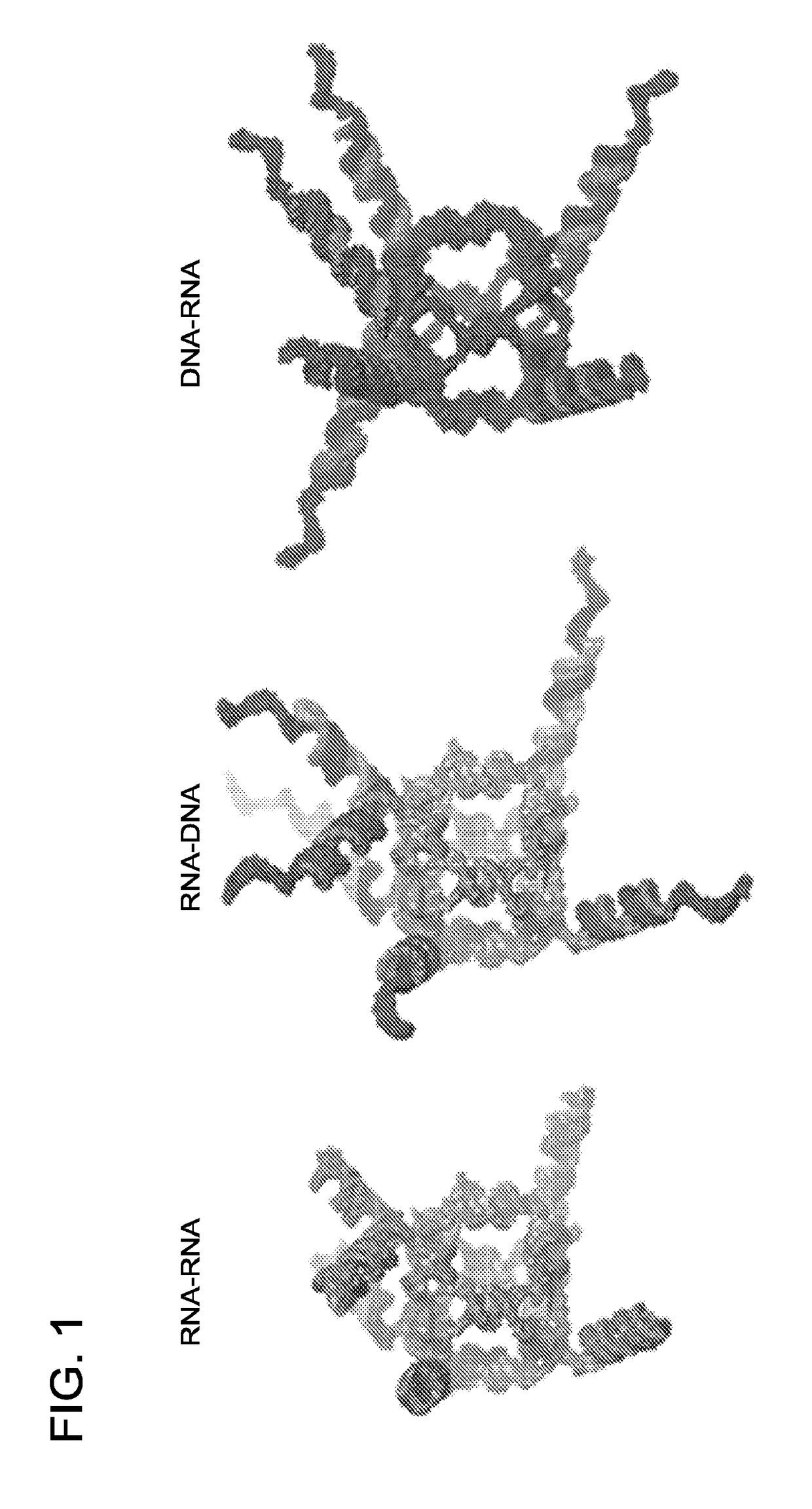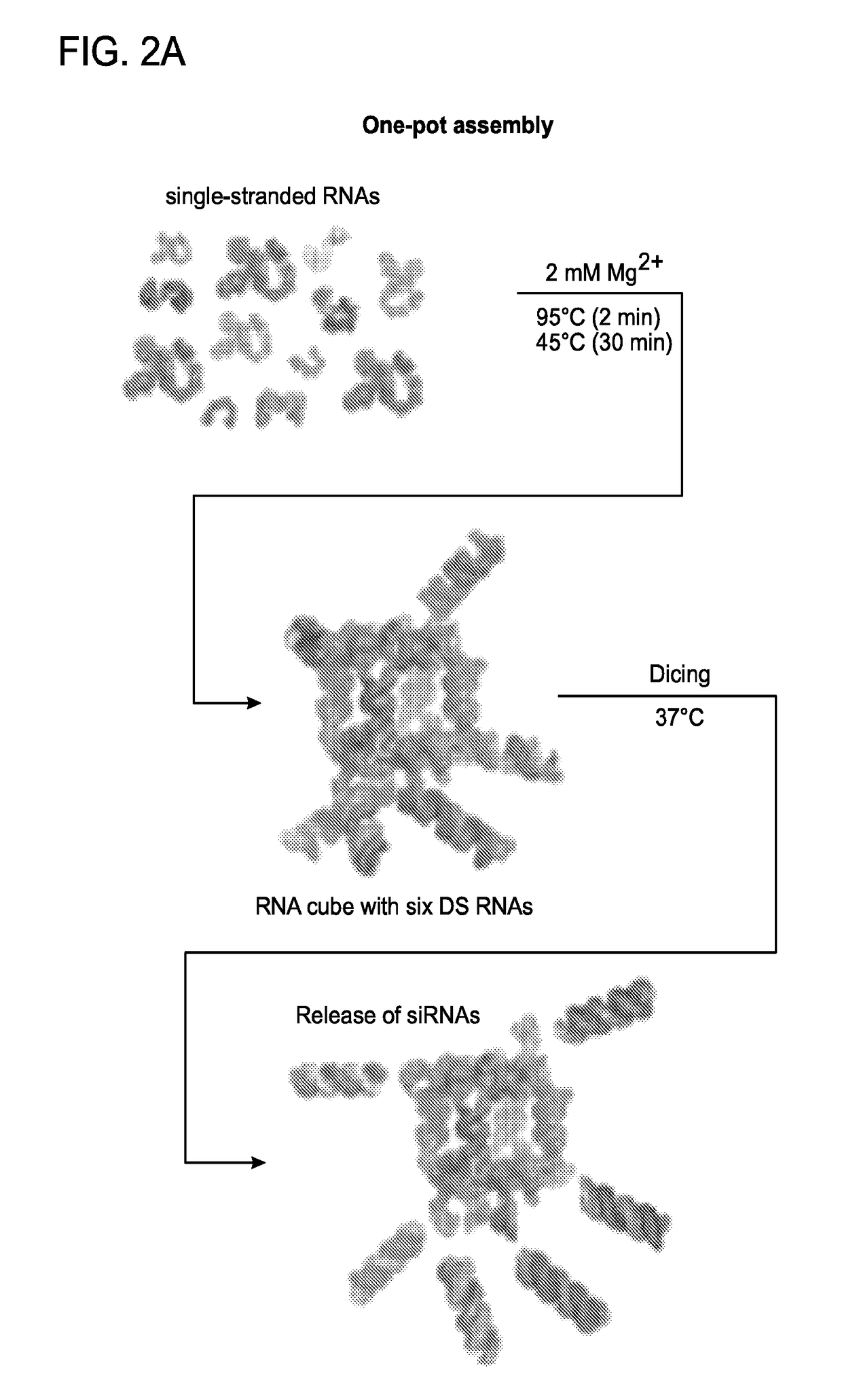Triggering RNA interference with RNA-dna and dna-RNA nanoparticles
- Summary
- Abstract
- Description
- Claims
- Application Information
AI Technical Summary
Benefits of technology
Problems solved by technology
Method used
Image
Examples
example 1
Methods
[0253]3D modeling of functional RNA and DNA cube assemblies. All three-dimensional models of the functional nanoparticles presented herein were generated using custom-written PyMOL scripts. In case of the RNA cube scaffolds, the previously generated and tested RNA cube model22 was mated with separately generated multiple alternative models of a helix and siRNA arm junction generated with the aid of RNA2D3D, MC-Sym, and RNAComposer38-40. Overlapping fragments were best fit together (minimum RMSD), then any structural duplicates were removed, and the final models were converted into PDB files and imaged in PyMOL. The DNA cube models were built using RNA cube helices as guides to lay out separately generated B-form DNA helices bridged in the corners with single-stranded (B-form) DNA fragments. Overlapping backbones were best fit and ultimately fused into individual chains (with duplicate fragments removed). The junction models were best-mated to the cubic DNA scaffold and separa...
example 2
Construction, Assembly and Knockdown Efficacy of RNA Nanocubes Having DsiRNA Arms
[0266]Six-stranded RNA nanocubes with three single-stranded uracils at the corner were previously characterized22 as scaffolds for the controlled delivery of multiple siRNAs. Through 3′-side extensions of individual scaffold strands, RNA nanocubes were functionalized with six Dicer Substrate RNAs23 or DsiRNAs (FIG. 3a). DsiRNAs were used to promote the release of siRNAs in cells through dicing13 (FIG. 13a). To study the potential use of RNA scaffolds for simultaneous delivery of multiple siRNAs, nanocubes functionalized with six fluorescently labeled DsiRNAs were transfected using Lipofectamine 2000 into human breast cancer cells (FIGS. 2b and 12), visualized by confocal fluorescence microscopy and analyzed by fluorescence-activated cell sorting (FACS). The results revealed significant intracellular uptake of functionalized nanocubes through endocytosis (FIG. 2c). Intracellular release of siRNAs activat...
example 3
RNA Nanocubes Having DsiRNA Arms Targeting Multiple Sites in HIV-I Were Highly Effective At Reducing Infectivity In Vitro
[0267]To demonstrate the generality and the feasibility of the approach of using functionalized nanocubes as therapeutic moieties, several different HIV-1 genes (ldr, nef, pro, env, gag and rt) were targeted with six different DsiRNAs24 carried by the RNA nanocubes (FIG. 3). 293T cells were used to produce HIV-1 pseudotyped with VSV-G in the presence of increasing amounts of nanocubes or a mixture of the six DsiRNAs. Equal amounts of virus-containing supernatant were used to infect HeLa cells, and the percentage of infected cells was detected using FACS analysis. As shown in FIG. 3, nanocubes had a negative effect on HIV-1 production that was comparable to a mixture of six DsiRNAs alone. This approach can be used as a part of a combinatorial RNAi (co-RNAi) strategy used for highly effective simultaneous suppression of multiple viral genes, thereby preventing the p...
PUM
| Property | Measurement | Unit |
|---|---|---|
| Interference | aaaaa | aaaaa |
Abstract
Description
Claims
Application Information
 Login to View More
Login to View More - R&D
- Intellectual Property
- Life Sciences
- Materials
- Tech Scout
- Unparalleled Data Quality
- Higher Quality Content
- 60% Fewer Hallucinations
Browse by: Latest US Patents, China's latest patents, Technical Efficacy Thesaurus, Application Domain, Technology Topic, Popular Technical Reports.
© 2025 PatSnap. All rights reserved.Legal|Privacy policy|Modern Slavery Act Transparency Statement|Sitemap|About US| Contact US: help@patsnap.com



